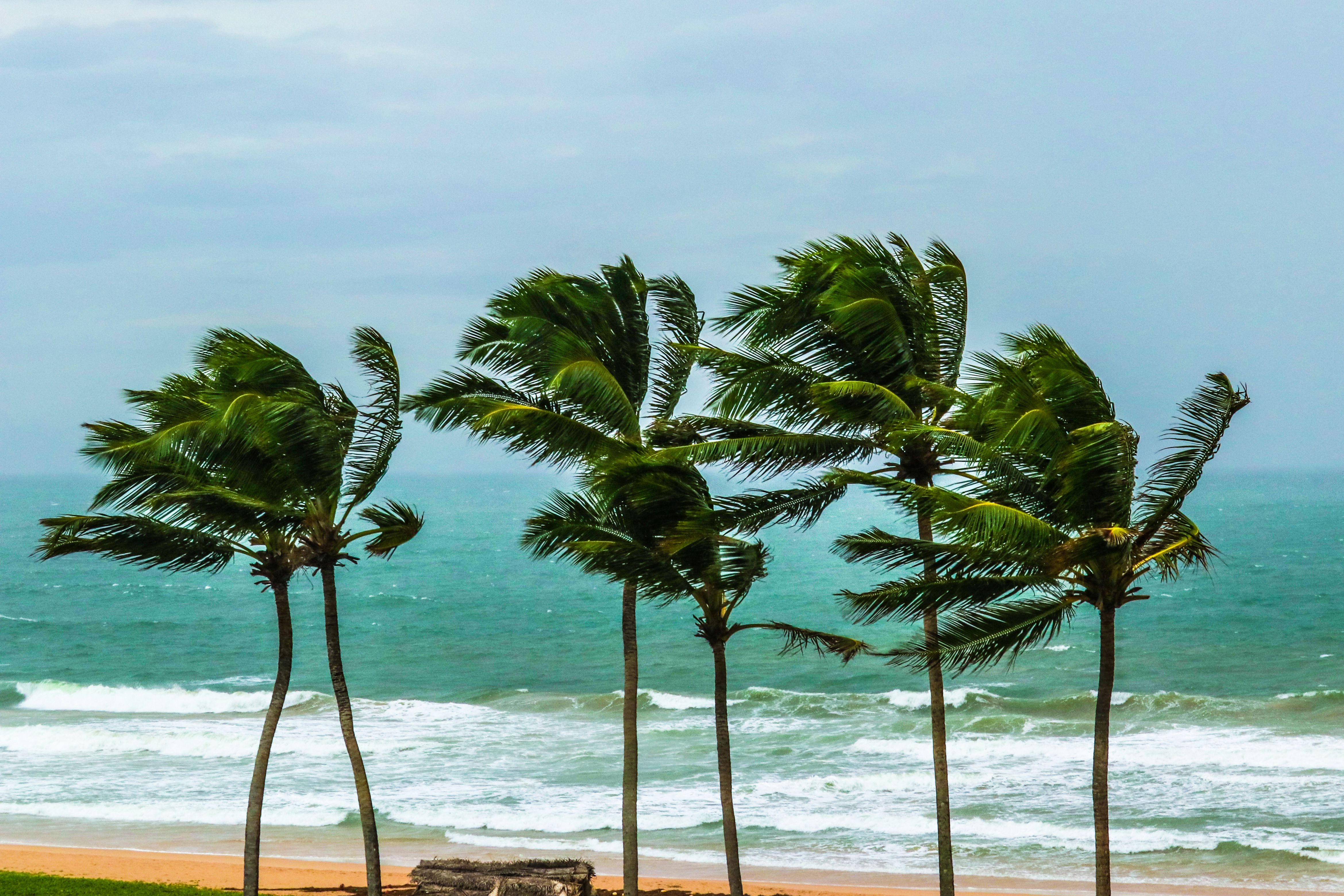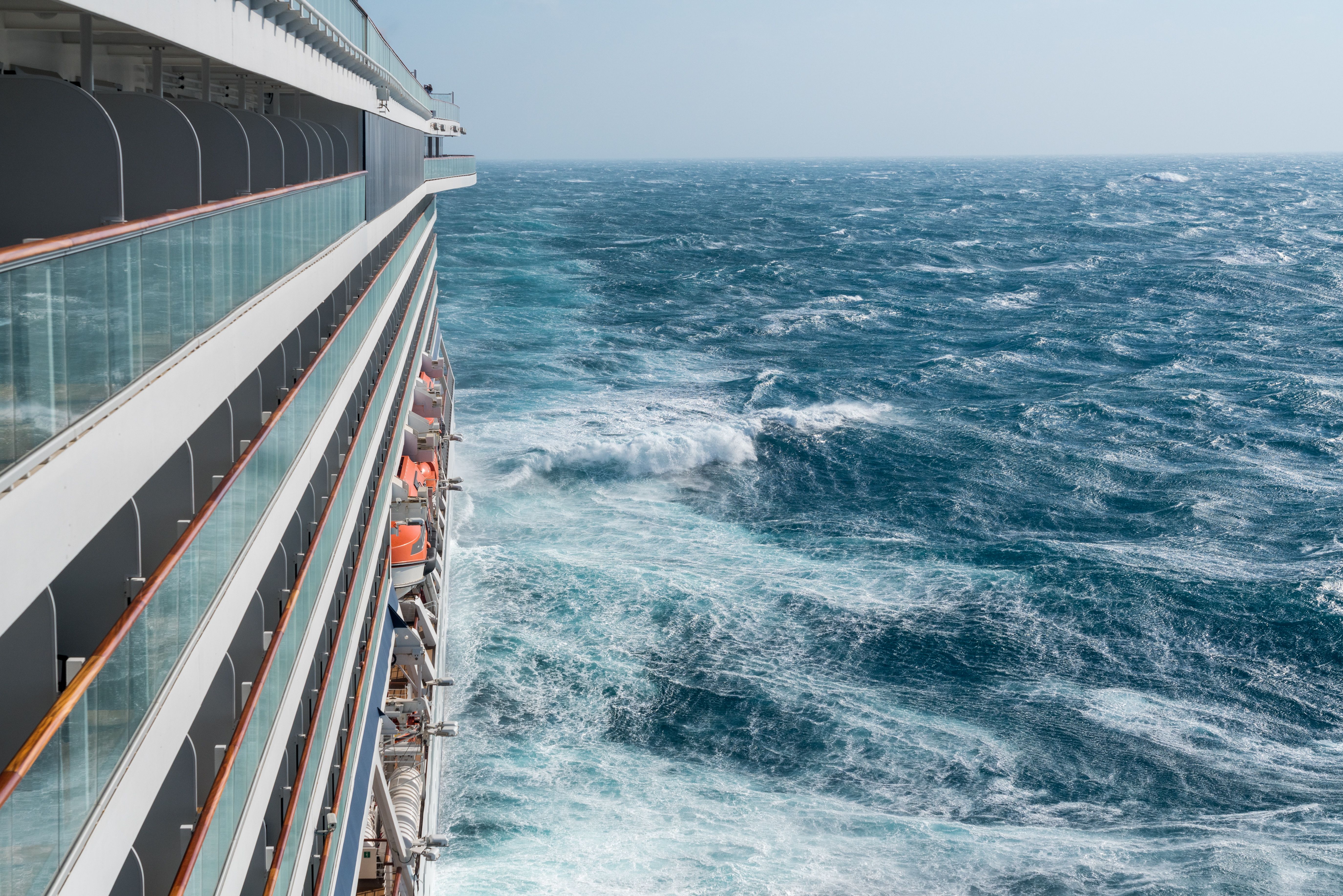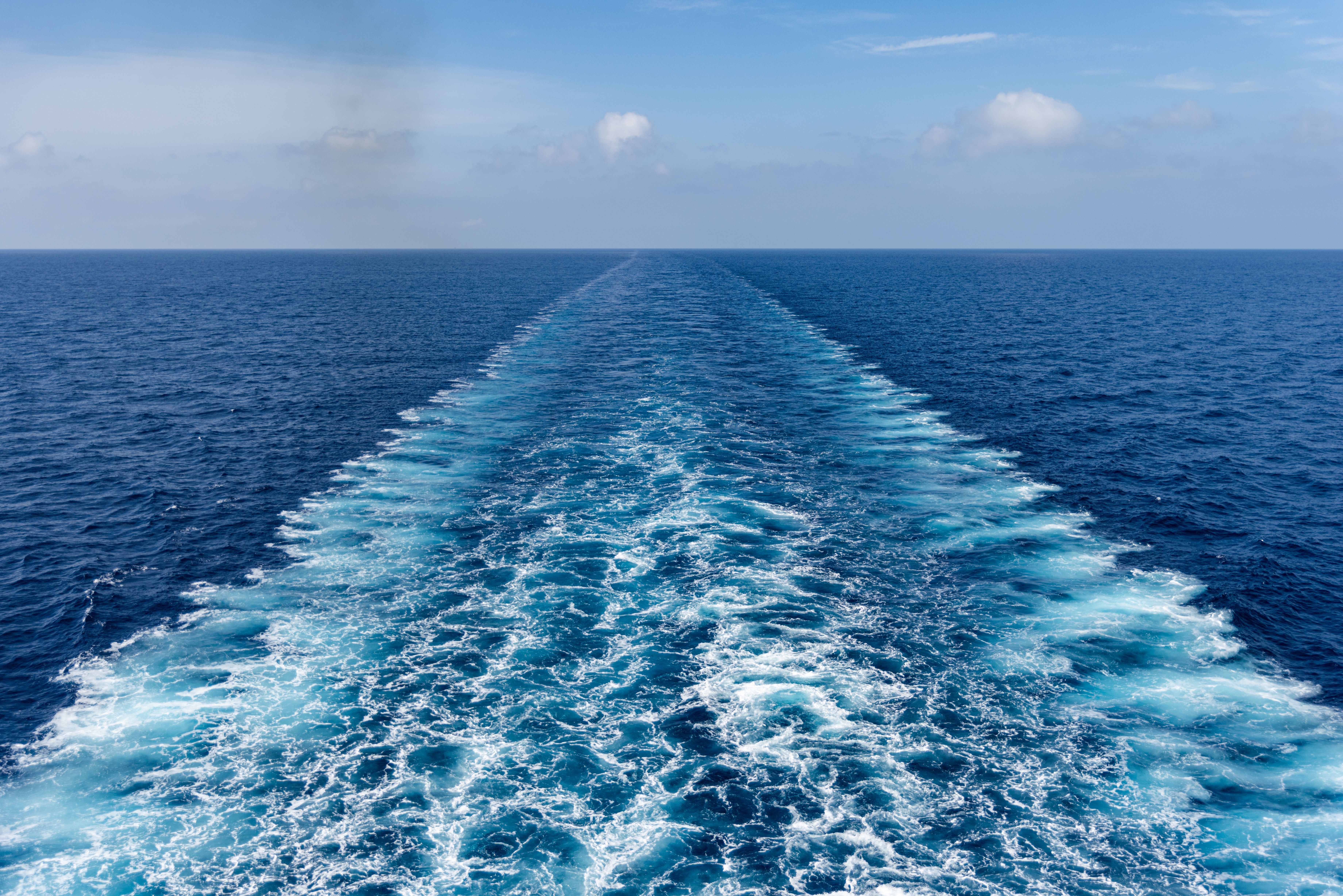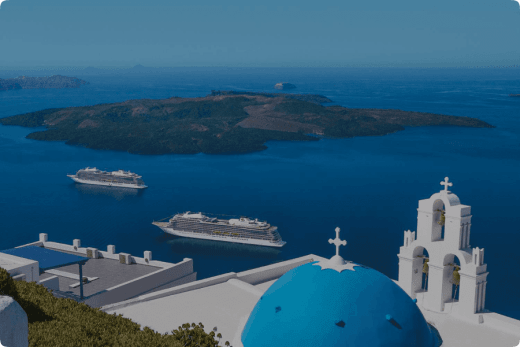Is it safe to cruise the Caribbean during hurricane season? What to expect & how to prepare

Booking a hurricane season Caribbean cruise might prompt a pause. After all, the idea of setting sail during one of the world’s most active storm periods can be unnerving. But here is the reassuring truth, cruising during hurricane season can be just as safe, and even more rewarding, when you understand what to expect and how cruise lines prepare.
Cruise lines invest heavily in storm tracking, ship design, and real-time rerouting. In the following sections you’ll discover expert insights, real-life examples, and helpful tips to ensure your family can cruise with confidence even during hurricane season.
Related: 5 best Caribbean islands to visit on your cruise
On this page:
- When Is hurricane season in the Caribbean?
- Is it safe to cruise during hurricane season?
- How cruise lines handle hurricanes: Real-time strategies
- What happens if your itinerary changes?
- Travel insurance, flights & booking smart
- Onboard experience during hurricane season
- Why cruising during hurricane season might be a hidden gem
- Cruisebound tips for Caribbean cruising during hurricane season
Find your Caribbean cruise and be hurricane-season ready:
component::sailings_carousel::lineIds=5,6,8,4,1&minNights=3&sortBy=price&sortOrder=asc
When is hurricane season in the Caribbean?

Hurricane season in the Caribbean officially runs from June 1 to November 30, with the peak months being August, September, and October. While the entire region falls under the general storm season, the timing and frequency of storms vary by location. Late-season storms, especially in October and early November, tend to affect the Western Caribbean more heavily, including ports like Cozumel, Grand Cayman, and Jamaica, while June and July often see more activity in the Eastern and Central Caribbean.
It’s also important to understand that hurricane season doesn’t mean daily storms. Most days remain sunny and calm, and modern ships are equipped to navigate away from affected areas. A useful myth to bust: not every part of the Caribbean is under threat at once. A hurricane near Puerto Rico doesn’t mean the entire region is unsafe. Cruise lines continuously monitor conditions and adjust as needed, which is why most departures and port calls continue without interruption.
Strategic planning, like choosing a cruise with flexible itineraries or sticking to Southern Caribbean routes, can make all the difference for travelers concerned about weather risk during this time of year.
Is it safe to cruise during hurricane season?

Yes, and here’s why.
Cruise ships are marvels of engineering designed to take on big seas, which means cruising during hurricane season is a safe bet, even when travelers wonder, “are seas rough aboard Caribbean cruises during hurricane season?” The answer is reassuring: despite occasional swells, modern ships are built to handle it. Under the waterline, their heavy‑gauge steel hulls withstand extreme pressure, while wide beams and low centers of gravity enhance stability.
Above and below the waterline, passive systems like bilge keels and fixed fins create hydrodynamic resistance that dampens roll. Combined with active stabilizer fins controlled by gyroscopes and hydraulic systems, these vessels can reduce rolling motion by up to 80%. In real‑world conditions, cruise ships have been recorded riding out waves of 35 - 40 feet with little noticeable impact on passenger comfort .
Speed provides another crucial layer of safety. Hurricanes typically travel at 15 - 20 mph, while modern cruise vessels routinely cruise at 23 mph and can surge to 35 mph when necessary. That speed allows them to skillfully steer clear of storm paths. Tests and modeling confirm these ships can endure 50-foot seas without risk of capsizing, with tipping thresholds around 60 degrees before becoming unstable .
Behind the scenes, cruise lines maintain a world-class meteorological infrastructure. Royal Caribbean currently employs a civilian-certified Chief Meteorologist who monitors weather across the fleet, coordinating with NOAA and ship captains to forecast storms, reroute ships, and keep both crew and passengers informed. Meanwhile, Carnival Cruises runs a 24/7 Fleet Operations Center equipped with a large live-weather video wall and real-time NOAA data feeds .
In short, cruise lines combine cutting-edge ship design, advanced stabilization, responsive navigation, and expert-weather coordination to make a Caribbean cruise during hurricane season a thoroughly managed and safe experience.
How cruise lines handle hurricanes: Real-time strategies
Cruise lines don’t wing it when it comes to guest safety. While a cruise during hurricane season Caribbean may sound risky at first, the reality is that cruise lines have well-established safety protocols in place to protect both passengers and crew. Their standard playbook includes flipping ports, adding sea days, skipping destinations, or seeking calmer waters behind islands. These tactics are implemented proactively, often days in advance.
For example, during Hurricane Irma in 2017, Royal Caribbean’s Enchantment of the Seas navigated well offshore while passengers received frequent updates from Van Fleet via cabin videos and captains’ briefings . In 2014, when Hurricane Cristobal approached, Carnival Liberty altered its route, successfully evading the storm and even performing an at-sea rescue .
Their data-driven approach ensures swift detection, timely notification, and immediate action, even rerouting port calls when necessary.
What happens if your itinerary changes?

For travelers considering a Caribbean cruise hurricane season itinerary, it’s reassuring to know that full cruise cancellations are incredibly rare. Cruise lines go to great lengths to preserve the sailing, even if they need to alter the original plan.
Instead of cancellation, guests may experience itinerary adjustments such as swapped ports, added sea days, or skipped destinations, especially when tendering becomes unsafe. While these changes are sometimes disappointing, they are made for safety and are handled proactively.
When ports are missed or rerouted, port taxes and fees are usually refunded automatically, but it’s important to note that shore excursion refunds aren’t guaranteed unless the excursions were booked directly through the cruise line. Third-party tours typically require travel insurance for reimbursement. Many seasoned cruisers recommend sticking with cruise line excursions for this reason.
Compensation for itinerary changes varies. Cruise lines may offer onboard credit, future cruise credits, or in rare cases, partial refunds if a cruise is significantly shortened. According to frequent cruisers on message boards like Reddit, cancellation of the entire cruise is a last resort, reserved only for extreme situations when safety or port operations make it impossible to sail.
If you’re asking, when is hurricane season for Caribbean cruise itineraries most likely to be impacted, the answer is typically late August through early October. However, even during these months, hurricane season cruises Caribbean sailings usually proceed with only minor changes, thanks to expert weather forecasting and flexible rerouting.
Cruise lines are transparent in these situations, providing regular updates, clear explanations, and policies that prioritize both safety and fairness. For most guests, the result is still an enjoyable and well-managed vacation, even if the original route gets a slight detour.
Be prepared and cruise the Caribbean worry-free:
component::sailings_carousel::regionIds=10&minNights=3&sortBy=recommended
Travel insurance, flights & booking smart
When planning a Caribbean cruise during hurricane season, proactive booking strategies make all the difference.
One of the most important investments is travel insurance for cruises hurricane season. This coverage should include protection for weather-related cancellations, trip interruptions, and missed connections. Many travelers also opt for Cancel-For-Any-Reason (CFAR) plans, which offer the highest level of flexibility, just be sure to purchase your policy well before any named storm appears.
In addition to insurance, it's smart to arrive at your departure port one to two days early. Flight delays caused by storms, even in distant regions, can affect your ability to embark on time.
Choosing cruise lines with clear hurricane policies, such as Royal Caribbean, Celebrity Cruises, Princess Cruises, and Norwegian Cruise Line, adds another layer of peace of mind. And for travelers who want real-time support, using a travel advisor can help you stay on top of forecast shifts, cruise alerts, and any last-minute changes.
Planning ahead and protecting your trip financially ensures that even if the weather changes, your cruise plans don’t have to.
Onboard experience during hurricane season

If you’re wondering what it’s actually like to cruise during hurricane season, the good news is that the onboard experience stays remarkably normal, even if your itinerary shifts. When a port is skipped or swapped due to weather, cruise lines typically add a sea day, but that doesn’t mean guests are left bored or stuck inside.
In fact, many passengers find sea days to be the most relaxing part of the trip. Cruise directors quickly adjust the daily schedule, adding extra trivia games, cooking demos, dance classes, and pop-up activities around the ship. Kids’ clubs ramp up programming, and adults often use the extra downtime for spa appointments, wine tastings, or lounging in quiet areas like the solarium or library. It’s part of what makes cruising in the Caribbean during hurricane season feel more flexible than frustrating.
Guests frequently ask, “are seas rough during hurricane season cruise itineraries?” While swells can be stronger than usual on certain sailings, cruise ships are designed to handle them. Stabilizers reduce rolling by up to 80%, and captains avoid storm zones altogether using detailed forecasts. In practice, most passengers experience no more than a slightly bumpy sea day, often less motion than a turbulent flight.
If you're prone to motion sickness, it’s a good idea to book a midship cabin on a lower deck and pack motion remedies like Bonine, ginger chews, or acupressure bands. Many onboard shops also carry seasickness medication if needed.
Overall, the ship’s crew is highly trained to keep guests comfortable during reroutes. Regular updates from the captain help set expectations, and the staff works hard behind the scenes to keep dining, entertainment, and daily routines running smoothly. So while your route may change, your vacation rhythm doesn’t have to.
Why cruising during hurricane season might be a hidden gem

For travelers willing to be flexible, cruising during hurricane season can unlock some of the best vacation perks in the Caribbean.
One of the biggest draws is value. If you’re looking for a hurricane season Caribbean cruise deal, the months of August through October often feature lower fares and added incentives like onboard credit or cabin upgrades. It’s not uncommon to find discounts of 30–50% compared to peak winter sailings, especially for a Caribbean cruise September hurricane season departure.
But it’s not just about price. Ships during hurricane season are typically less crowded, which means shorter lines, easier restaurant reservations, and a more relaxed onboard atmosphere. Families, couples, and solo cruisers alike appreciate the breathing room and personalized service that comes with reduced occupancy.
Another unexpected benefit? Surprise ports. Because itineraries may shift to avoid storms, guests sometimes get extra days in sunny destinations like Cozumel or Aruba, or find themselves visiting off-the-beaten-path ports they hadn’t originally booked. These reroutes can feel like bonus adventures, turning a potential disruption into a memorable highlight.
And despite the season’s name, most days are still clear and beautiful. Storms are tracked well in advance and avoided by the ship, so you’ll often enjoy long stretches of sunshine between brief squalls or cloud cover.
If you’re the kind of traveler who sees flexibility as a feature, not a flaw, this may be the best time for Caribbean cruise hurricane season travel. The combination of lower pricing, better availability, and unique experiences makes it a savvy option for those who know how to cruise smart.
🛟 Cruisebound tips for Caribbean cruising during hurricane season
1. Book with cruise lines known for robust hurricane protocols
Choose well-established lines such as Royal Caribbean, Celebrity, Princess, Norwegian, or Carnival. These companies maintain 24/7 meteorological command centers and storm-tracking teams, and they are equipped to reroute ships as needed.
2. Arrive at least one to two days before embarkation
Flights can be delayed even by distant storms. Buffer days help prevent travel stress and missed sailings, as recommended by AAA and TPG.
3. Purchase travel insurance before a storm is named
Include weather-related trip interruption and Cancel-For-Any-Reason (CFAR) coverage. Buying early ensures protection in the event of storms.
4. Book shore excursions through the cruise line
Tours booked on board can lead to automatic refunds if a port is skipped. Third-party vendors may not offer this flexibility.
5. Pack smart for changing weather
Include a packable rain jacket, waterproof shoes, layers, waterproof phone pouches, and seasickness remedies like Dramamine or Sea-Bands.
6. Choose interior or mid-ship cabins
These areas typically offer the smoothest ride. Ships modelled in labs for storm simulations confirm cabins near the center are most stable.
7. Build flexibility into your mindset
Swapped ports or extra sea days often become unexpected highlights for adaptable travelers.
8. Monitor weather independently
Use AccuWeather, NOAA apps, and local emergency websites for your departure port. These tools complement cruise line updates.
9. Pack extra essentials
Bring backup chargers, medications, snacks, and entertainment in case itinerary changes cause delays.
10. Stay connected to notifications
Sign up for cruise-line alerts via app, email, or SMS. Many lines, like Celebrity, also offer bundled flight protections within their booking interface.
Cruise confidently, even during hurricane season
A cruise during hurricane season can be a smooth and enjoyable experience, especially when you know how cruise lines prepare and adapt behind the scenes.. With ocean-rated ship construction, dedicated meteorologists, shipboard safety protocols, and reactive rerouting systems, cruise lines put your family’s safety and enjoyment first.
Most voyages continue smoothly, and when storms prompt changes, lines are transparent, communicative, and supportive. All that remains is the reward, less crowded ships, valuable deals, and that unbeatable cruise escape.
Ready to cruise? Explore safe & flexible Caribbean cruises during hurricane season on Cruisebound and sail knowing safety truly comes first.


